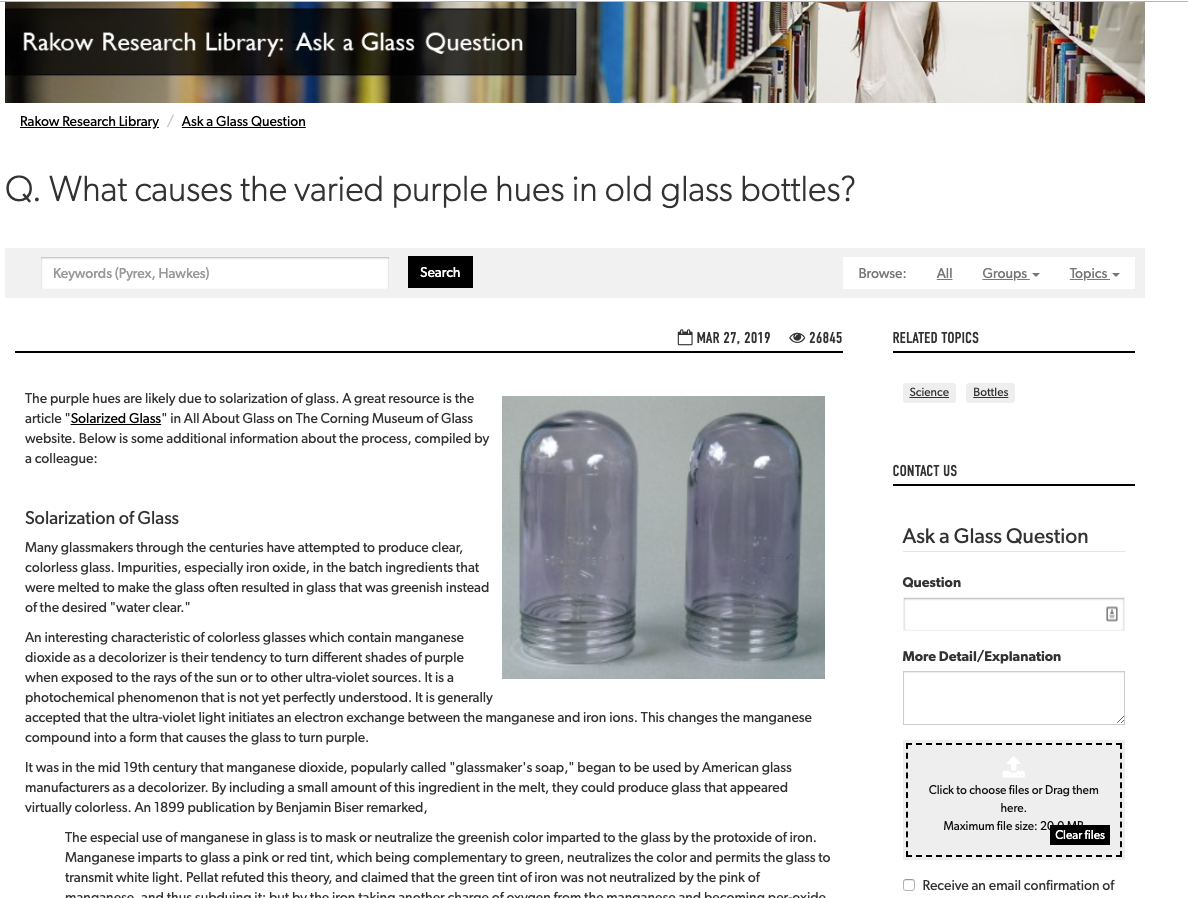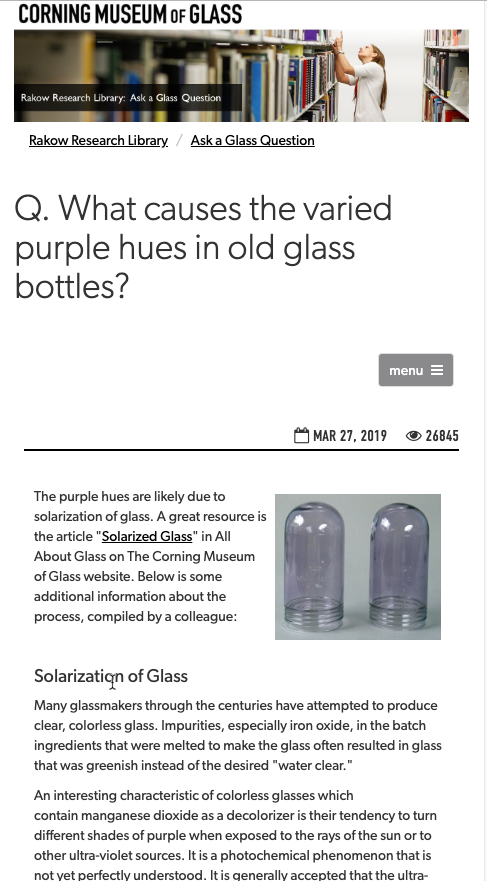If you’ve been using LibAnswers for awhile, you might be looking for fun and new ways to reinvigorate and boost usage of your various LibAnswers services.It happens to all of us, we get into a groove and then coast along.
But, if you’re noticing your stats are staying consistently steady, or flatter than Wile E. Coyote after using a catapult (this pun brought to you by Springy Greg! 🙂 ), it might be time to consider implementing some of these tips to turn that plateaued bar chart into a steep spike!
Reimagining LibAnswers FAQs
In case you missed it, SpringyCamp – Springshare’s virtual user conference, occurred on July 31, 2019. Among the amazing lineup of presenters (all of which you can watch here), was a presentation by Mikki Smith from the Corning Museum of Glass on Reimagining LibAnswers FAQs.
Bit of Background
The Corning Museum of Glass has been using LibAnswers since 2014 and created most of their public FAQs from an old database of FAQs from a previous system. Many of the FAQs included attached .doc bibliographics.
Around 2016, they became a bit more selective about which questions should turn into public FAQs, but did not retroactively apply that criteria to existing FAQs.
In 2017, they began to add images to existing FAQs and to use FAQs to highlight exhibitions.
Then, in 2018, looking at data from Google Analytics, they decided to reimagine FAQs as a mobile-friendly experience. Why? Because they noticed that a large percentage of their visitors were from mobile-devices. Thankfully, LibAnswers comes mobile-first right out of the box. But with some small tweaks to their FAQ content, they were able to make their FAQs more user-friendly, more mobile-friendly, and saw their usage stats increase.

Starting with 1,300 FAQs to revise, it was a big project to undertake. Here’s some of the tips from Mikki’s presentation on reimagining their FAQs as an up-to-date visually appealing set of questions:

- Visuals – The Corning Museum of Glass has gorgeous objects on display. They make full use of that by embedding images into their FAQs to enrich the user-experience.
- Improving the Metadata – Improving the FAQ metadata (FAQ title, answer, keywords, topics) helps to improve the SEO and findability of their FAQs. From their Google Analytics data, they found that 80% of their FAQ-traffic came as the result of a Google Search. Meaning that most users weren’t starting at the Library website. They started at Google and then found one of the FAQs because of a Google search on their topic of interest.
- Actively Linking to Content – The Library and Museum have a ton of content to share with users. Don’t reinvent that content in your FAQs. Link to it in your FAQs to improve SEO and reduce duplication of content and efforts. Mikki and the team try and have at least one link out to existing Library and Museum content on each FAQ so it’s more of an experience and an opportunity to explore.
- Rich Digital Content – The Library & Museum have videos on their YouTube page. By embedding them in their FAQs, they’re actively promoting their digital content and improving the experience for the patron.
- Establish a Workflow – Create a workflow to ensure FAQs are updated. Mikki’s team divided the FAQs so each librarian has a dedicated number to review each month.
- Promote on Social – Proactively promote your FAQs on social media to improve findability and increase your digital outreach.
- Highlight Exhibitions – Whether or not your library has exhibitions, you might do custom displays for books (i.e. Poetry Month) or a promotion of archives, or an event. Consider creating a LibGuide on that exhibition, event, or display and then embed FAQs right onto it. Corning Museum of Glass did this with their New Glass Now Exhibition LibGuide and then added a tab to their LibAnswers homepage to highlight those FAQs there too.

Launching Proactive LibChat
If you’ve been offering virtual chat reference services for awhile now, your users might be accustomed to the service and your usage stats are steady, but not increasing.
If you’re looking for a way to increase usage stats of your LibChat reference service, without launching a whole new advertising campaign, consider implementing Proactive LibChat. Proactive LibChat simply turns your LibChat widget into a proactive one – popping out after a customizable period of time asking the user if they need help.
So, instead of waiting for them to ask for help, you can offer help first. Enabling Proactive LibChat is as easy clicking a check-box on your LibChat Widget Builder. We outline how to setup Proactive chat on this blog post.
Institutions that have enabled proactive LibChat saw varying increases in usage from 230% (CSU – Dominguez Hills) to 600% (University of San Diego’s Copley Library). While we can’t promise how your specific demographic will respond, recent research articles written by Michael Epstein from the University of San Diego’s Copley Library and another from Lydia Pyburn from The University of Texas at Arlington Library indicate that the answer is yes!
Upcoming Webinars – Guest Speakers
If you’d like to learn more about LibAnswers Proactive Chat, we have two upcoming guest speaker sessions from real libraries using Proactive LibChat. Sign-up below:
- How Two California State University Libraries Used Proactive LibChat
- Tues, Aug 20: 12:30pm – 1:00pm US ET
- How the College of the Mainland Library Uses LibAnswers Proactive LibChat
- Mon, Aug 26: 12:30pm – 1:00pm US ET
Optimized Session
If you’re in the European Union and you’d like to learn more about LibAnswers and proactive LibChat, we have an optimized time for you!
- LibAnswers Proactive LibChat Helps You Reach More Users
- Tue, Aug 27: 5:00am US ET / 10.00 WEST / 11.00 CEST / 12.00 EEST



Wonderful idea! Never thought of adding visuals to our FAQs!
What’s enaging? Do you mean engaging?
Thanks for alerting us to the typo!
All fixed!
Springy Talia